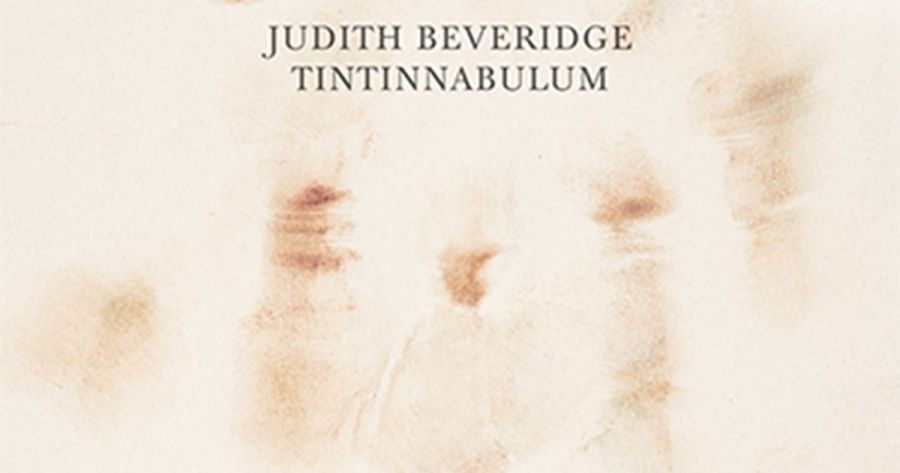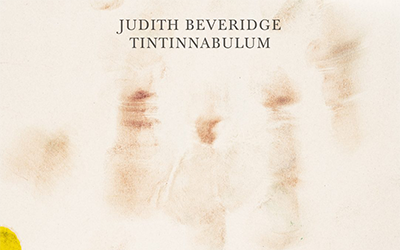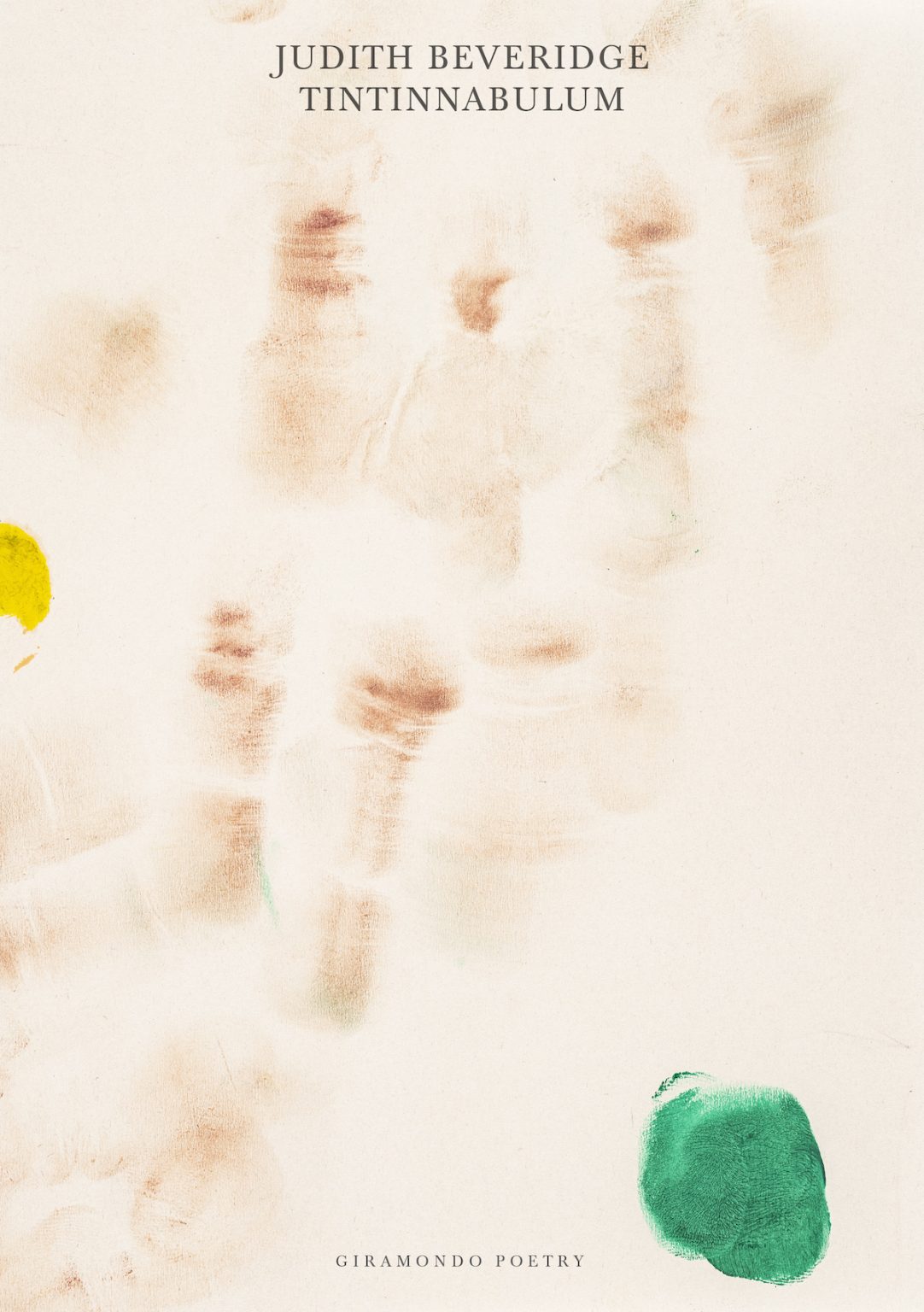
- Free Article: No
- Contents Category: Poetry
- Review Article: Yes
- Article Title: Summoned by bells
- Article Subtitle: Poetry’s auditory affordances
- Online Only: No
- Custom Highlight Text:
Bells are often associated with the sacred. A resonating bell marks out a space for reverence to inhabit. It calls for attention on the part of the devotee, for a shift in perception from the mundane to the sanctified. A ‘tintinnabulum’ is a small bell, and it is the name that the acclaimed poet Judith Beveridge has given to her latest collection of poems. ‘Tintinnabulation’ – the lingering sound of bells – is a word I first came across in the liner notes to Tabula Rasa, an album of music by the Estonian composer Arvo Pärt that explicitly brings together sound and sacredness.
- Featured Image (400px * 250px):

- Alt Tag (Featured Image): David McCooey reviews ‘Tintinnabulum: New poems’ by Judith Beveridge
- Book 1 Title: Tintinnabulum
- Book 1 Subtitle: New poems
- Book 1 Biblio: Giramondo, $27 pb, 81 pp
- Book 1 Cover Small (400 x 600):

- Book 1 Cover (800 x 1200):

- Book 1 Readings Link: https://www.readings.com.au/product/9781923106055/tintinnabulum--judith-beveridge--2024--9781923106055#rac:jokjjzr6ly9m
That all of this is conventionally called ‘imagery’ illustrates the ‘ocularcentric’ nature of modern culture, whereby vision is ranked over the other bodily senses. Beveridge is indeed keenly visual, and her visual imagery is often stunning, but it has long been apparent that her work is primarily sonic. Like poets such as Gerard Manley Hopkins and Les Murray, Beveridge is most taken by poetry’s auditory affordances.
This is not to say that her work is ‘merely’ formalist; her work is powerfully concerned with ethical matters, especially with regard to the interaction between humans and non-human animals, as well as humans and the environment. There are many poems here that praise such interactions, even if (or especially if) those interactions are the apparently passive ones of hearing and looking. But there is much lamentation and rupture, too.
Both are most clearly seen in ‘Animals’, the first part of Tintinnabulum. The poems on elephants, vultures, horses, and so on add to Beveridge’s much-admired corpus of poems on animals, and they all employ her pronounced gift for metaphor and simile. Among these new animal poems, the small poetic essay on ‘The Leech’, in its intensity and wit, for me ranks among her best. But there is a pronounced darkness about this wit, and these opening poems reveal a profound darkness generally. ‘Animals in Our Suburb, 1960s’, for instance, concerns the ordinary traumas of ‘pets turning into pests’: ‘Every childhood / had a killing field: chickens running around without their heads, / drowned rabbits, drowned guinea pigs.’
In ‘Dead Possum’, such darkness reaches an overpowering pitch. The poet, doing away with the fly-blown carcass of a possum, is sickened by the noise of the fly-pack, which is likened to ‘the cursed whines of old blues harmonicas doing time / at the cross-roads, anthems for an apocalypse in which / I foresaw thousands and thousands of maggots / creaming, risotto-like, inside my own half-eaten head’. The musical analogue here seems more like death metal (were it not unlikely that a death metal band would come up with the inspired image of maggots as ‘risotto-like’) than whatever musical association the pastel colours of the book’s front cover deceptively suggest.
In the subsequent sections of Tintinnabulum, the darkness lifts, though an elegiac sensibility remains present. The second section, ‘Walking with the Poet’, which collects poems concerned with humans at work and at leisure, sounds this elegiac note most explicitly. There is a formal elegy for the late Australian poet Robert Adamson, and more generally elegiac poems, including two moving poems concerning the poet’s mother and son. Amid these elegiac notes, we find the traditionally consoling image of humans in profound communion with the natural world.
The third section, ‘The Bizarre Bazaar’, shows Beveridge at her most playful, programmatically pushing the limits of her medium. ‘Moon Poem’ brings together the most foundational of poetic functions (metaphor), the inaugural poetic form (catalogue, or list), and one of the most ancient rhetorical figures of speech (apostrophe, or address to an inanimate object). To choose the moon – that most hackneyed of poetic clichés – as the subject for such a poetic exercise is indeed audacious. Beveridge peels off winning image after image, like a card shark at a games table. ‘You’re a plague sore on darkness’, she writes of our lunar satellite; ‘You’re every ocean’s private disco ball.’
The poems in this section illustrate Beveridge’s love of the exotic and outré. ‘A King Sends a Delegation to Meet a Clan from the South’ is a brilliant pseudo-history that calls to mind Jorge Luis Borges or Italo Calvino at their most inventive. ‘Reading the Clouds’ (another list poem) shows an austere romanticism, again redolent of Borges, concerning language as a thing in itself, referring, for instance, to ‘Clouds that long to drop their Latin names for sweeter ones: / bridal veil, egret wing, water lily, snow goose, arctic swan’.
The idea of language as a plaything reaches its apotheosis in ‘The Bizarre Bazaar’, a homage to the American modernist poet Wallace Stevens. ‘The Bizarre Bazaar’ is a superb example of Beveridge’s skill with rhyme; the poem is threaded with Stevens-onian words that rhyme with ‘bazaar’: ‘You can buy the oompah of a Bavarian band / and sell it to the cobbler sitting in a chair / spilling oranges and coffee down his pink peignoir’. Being familiar with Stevens’s Collected Poems, I loved recognising Beveridge’s artful borrowings. The note at the end of Tintinnabulum that gives chapter and verse of these (advertised) borrowings struck me as a tad redundant, but it is not surprising, I suppose, given current attitudes regarding the attribution of sources.
The final section of Tintinnabulum, ‘Choirwood’, returns to the natural world, but with a new sanguinity. Delight in the endless plurality of the world is the keynote here. As ‘The Light on Marrin Bay’ shows, delight in poetry’s aural condition is, if anything, amplified in this section. The poem begins with a flurry of sonic effects: ‘See this light’s unending glisk of spangly / wicks, micro-sparkles and flickery tinsel twists.’ The beautiful concluding poem, ‘Choirwood’, might be termed a nature poem, but such a designation is too banal for the almost-visionary intensity that this poem brings to the material world. Where the collection begins in darkness, it ends with a breathtakingly beautiful vision of dawn.
Like Arvo Pärt, Beveridge believes in her materials, using the most fundamental features of her medium to produce extraordinary effects. Certainly, she is not uninterested in the ethical and political realms that linguistic representation inevitably engages, but she is forever attuned to the magical, if not sacred, powers inherent in the sound of language, as well as its endless potential for analogy. I don’t need animal studies to tell me how much I love the vowel music of Beveridge’s description of an owl in ‘Two Houses’: ‘its pearl-ash and dusty-grey feathers made it look like a puff / of fog against the apricot blush of dusk’. Like bells, these words demand attention.


Comments powered by CComment